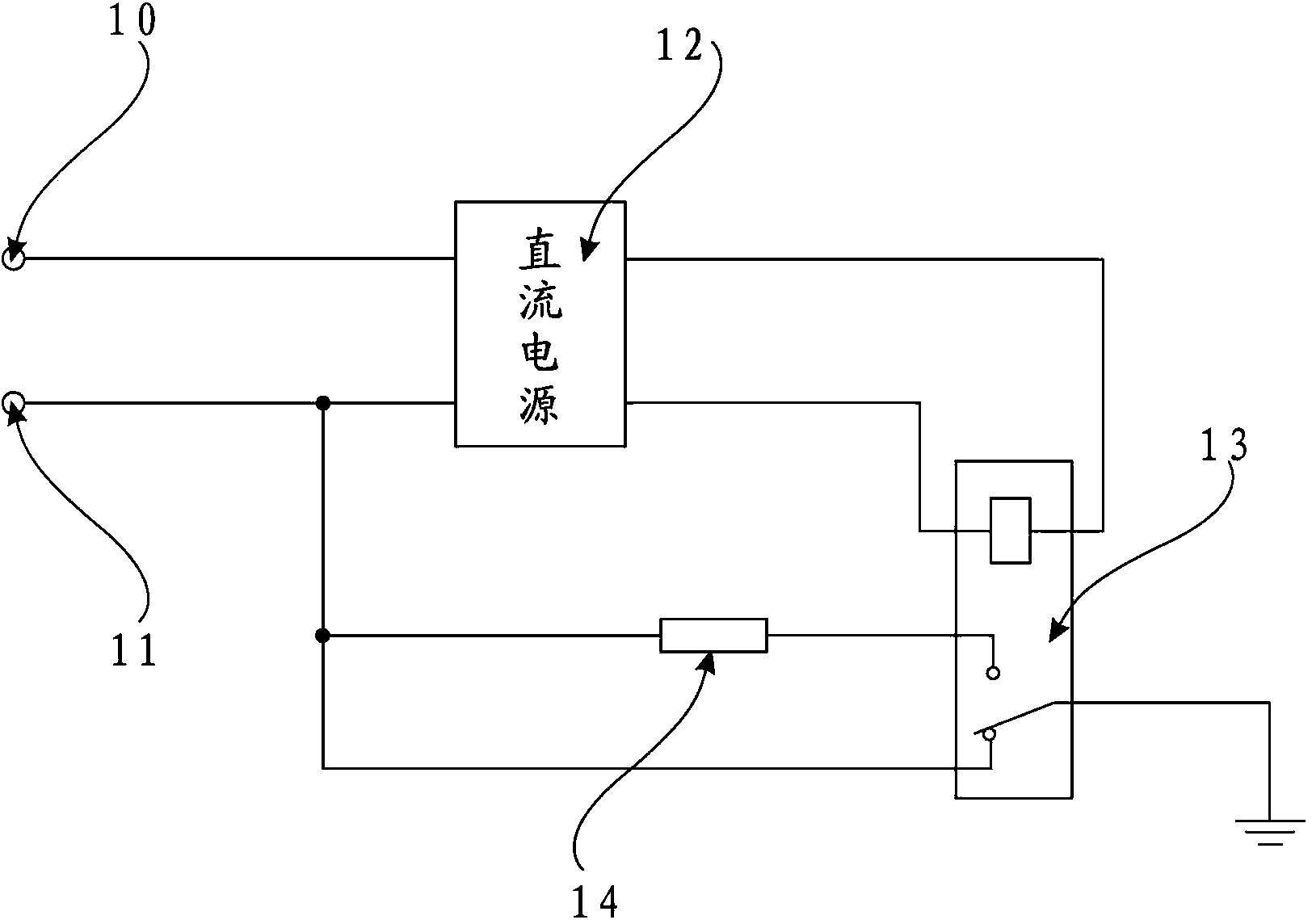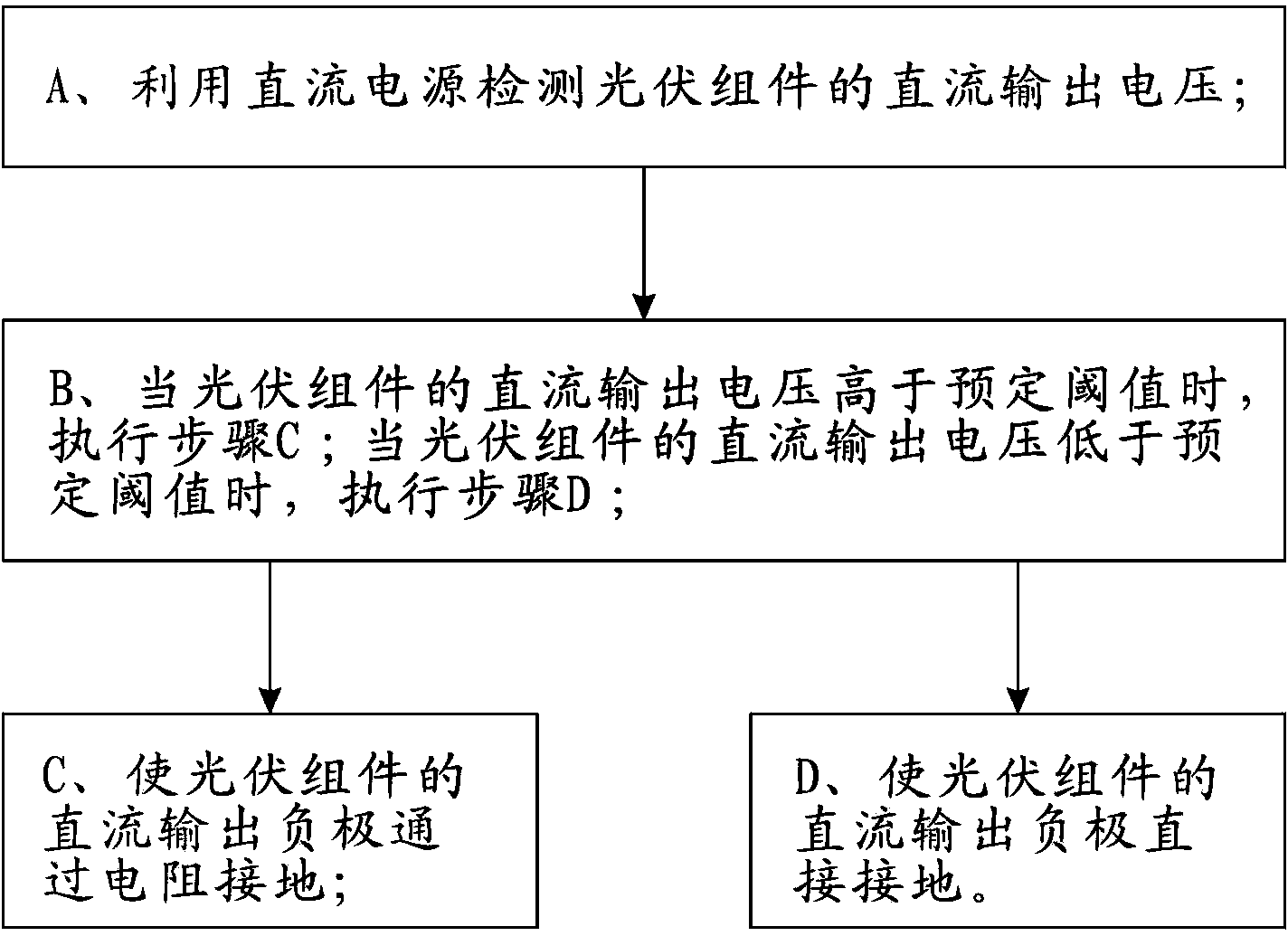Solar cell grounding device and method
A technology for solar cells and grounding devices, applied in the field of solar cells, can solve the problems of high inverter operating voltage, not electrical isolation, and high cost, and achieve the effects of ensuring attenuation, ensuring normal operation, and eliminating static charges
- Summary
- Abstract
- Description
- Claims
- Application Information
AI Technical Summary
Problems solved by technology
Method used
Image
Examples
Embodiment Construction
[0026] In order to express the present invention more clearly, the present invention will be further described below in conjunction with the accompanying drawings.
[0027] see figure 1 , the solar cell grounding device of the present invention includes a photovoltaic module DC output positive pole 10, a photovoltaic module DC output negative pole 11, a DC power supply 12, a relay 13 and a grounding resistor 14; the DC power supply 12 has a first input terminal, a second input terminal, a second An output terminal and a second output terminal, the relay 13 has an electromagnet, a normally closed contact, a normally open contact and a switch; the photovoltaic module output positive pole 10 is electrically connected to the first input terminal of the DC power supply 12, and the photovoltaic module DC output negative pole 11 It is electrically connected to the second input terminal of the DC power supply 12, and the electromagnet of the relay 13 is electrically connected between ...
PUM
 Login to View More
Login to View More Abstract
Description
Claims
Application Information
 Login to View More
Login to View More - R&D
- Intellectual Property
- Life Sciences
- Materials
- Tech Scout
- Unparalleled Data Quality
- Higher Quality Content
- 60% Fewer Hallucinations
Browse by: Latest US Patents, China's latest patents, Technical Efficacy Thesaurus, Application Domain, Technology Topic, Popular Technical Reports.
© 2025 PatSnap. All rights reserved.Legal|Privacy policy|Modern Slavery Act Transparency Statement|Sitemap|About US| Contact US: help@patsnap.com


